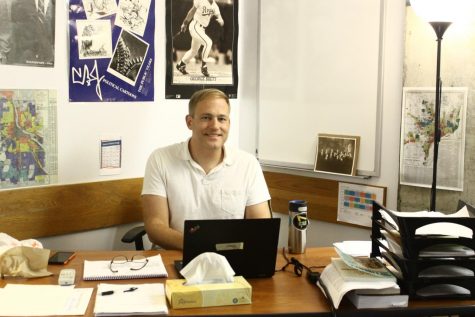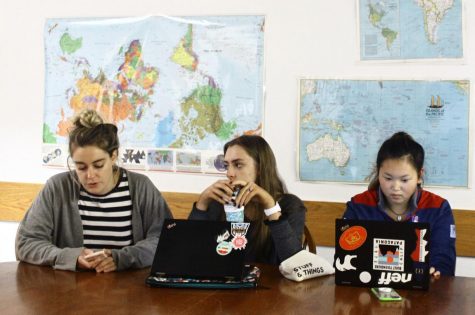History curriculum engages critical thinking
September 28, 2018
The History Department at Saint Paul Academy and Summit School has gone through momentous development since Upper School History teachers Sushmita Hodges, Ben Bollinger-Danielson and Jon Peterson started working.
Recognizing biases in how history is taught is one of the important changes in the SPA history curriculum. These changes occurred in the past years, and the curriculum continues to evolve.
“Biases exist in everything, but I would say that the selections of what we teach change,” said Bollinger-Danielson. “I know for instance there used to be a view years ago that religion shouldn’t really be talked about at school, that it should be a private thing. And about twenty years ago, before I was here, they wanted to create a world religions class where people could discuss world religion as both an experiential and an academic subject.”
Another main shift in the SPA history department has been attempting to shift away from Eurocentrism.

“[The SPA history curriculum] used to be very U.S.-centric and Eurocentric in some ways,” said Hodges.
Now, “world history” actually focuses on the whole world, as Bollinger-Danielson explained.
“We try to provide as many points of view on a topic as possible, so what used to be more of just a European history class, when I arrived 15 years ago, we’ve tried to make into more of a global history class. What they used to call world history was pretty much just Europe. Now we look to be more balanced and cover more around the world,” he said.
One key part of the change that took place within the SPA history department is decolonization.
“The curriculum, I would say, in the last four years has become more about decolonization. And decolonization not just as a historic event, but decolonizing history itself. The term decolonization, in my opinion, we’ve started to in the past three or four years use it more as a metaphor for shifting away from the master dominant narrative of telling the story of the modern world. So looking at different worldviews,” explained Hodges.
Hodges gives an example of how she attempts to teach decolonization in her World History II class.
“Westernization and modernization sometimes historians use interchangeably, but it’s not something that I’m doing in my 10th-grade classes,” she said. “It’s really about saying that there is this Indigenous worldview that’s equally valid, there are all of these counter-narratives and different approaches and just because they are not part of the larger dominant narrative or our experience as it has been typically told in history that they are not valid. So that’s why I like to emphasize that what we are doing is really highlighting the decolonization narrative in studying the modern world in the 10th-grade classes.”
Despite these drastic shifts, the history department is still changing and evolving. Though these changes are not entirely finalized or publicized, they will be coming shortly.
“I know that we are going to be talking over the next year and a half about how things are going to be different… It’s good to always be reevaluating what you do and why you do it trying to freshen things up: bring in new ideas, not just always do things the way you have,” Peterson explained. “Student input is highly valued, and we’d like to hear what students think … those are certainly conversations that will be happening over the next two years.”

Hodges expressed a want for more curriculum focused on the global south.
“I would like to see more senior electives offerings,” said Hodges. “For example, Latin America: there is a real gap, in my opinion. We don’t nearly study the continent of Africa … we really don’t necessarily study their post-colonial developments, and I think that is a big gap in our curriculum.”
“There will be more electives, there will be more choice. And with that a deeper study of what those electives are focusing on,” said Peterson.
A constant in the SPA history department is change. The curriculum continues to challenge historical thought through new viewpoints, encouraging critical thinking in students. These veteran teachers are the ones initiating that change and striving to give the best education possible.
“When I look at the people in my department,” Bollinger-Danielson said, “I’m so impressed with all of the ways that they authentically live these interests, and I think it’s great that they all pursue these really fascinatingly complex things in a really earnest way.”